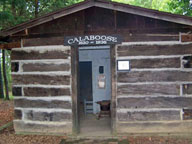|
Dreams of a historical village finally took root in 1990. From early days, society members struggled to find a home for their collections. The old railroad depot east of Mount Vernon served as a museum for several years. Early-donated buildings were located at Cedarhurst.
The historical village dreams became more real when three society members donated a total of five acres of rough, “dumping grounds” land. Members spent years clearing and leveling the land enough for building sites.
Through donations, major gifts, twenty-nine years and untold thousands of hours of volunteer labor, 19 structures now make up the village. More details of the village history are available here.
Members donated an additional 5.56 acres of undeveloped land in 2005. Known as the Heritage Acres, this area is home to the Timeline Trail described below and dreams for future development.
|
||
|
|
Calaboose | |
|
The log jail was built in 1820, one year after Mt Vernon became the County seat and two years after Illinois became a state. It was originally located on N 11th Street and was moved to the City Park and then Cedarhurst before coming to the Village. Just think, the logs in this jail were in existence when George Washington was President. It is a forbidding structure with heavily grilled windows and doors.
|
||
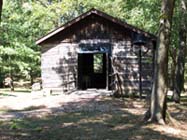 |
Mt Olive Church | |
| The church was built by John and Howard Gentle in 1873 and was located southeast of Bluford IL. It was moved to the Village in 1992 after spending years at Cedarhurst . Since then it has become a popular place for many weddings. | ||
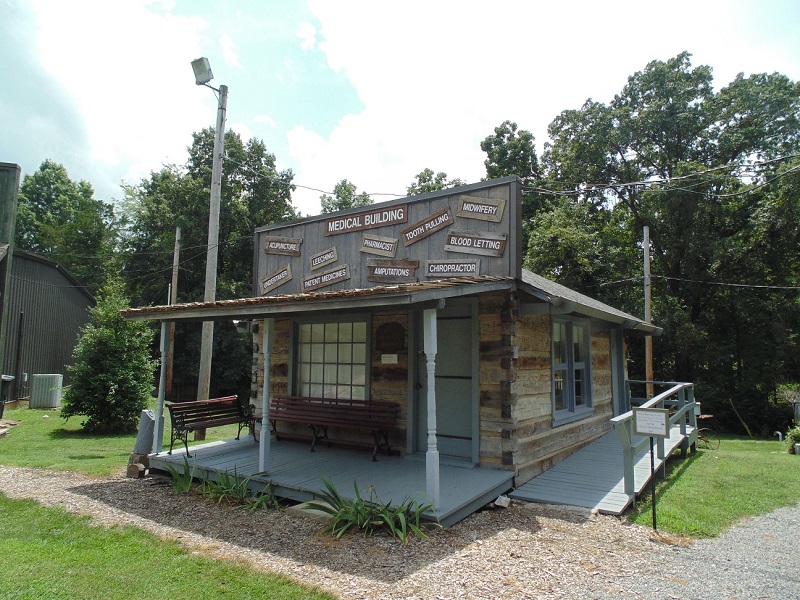 |
Medical Building | |
| The building was constructed by using the best logs from the Hays and Marteeny families' cabins. The contents are donations from the families of several Jefferson County doctors and dentists. One interesting artifact is a foot-operated dental drill. | ||
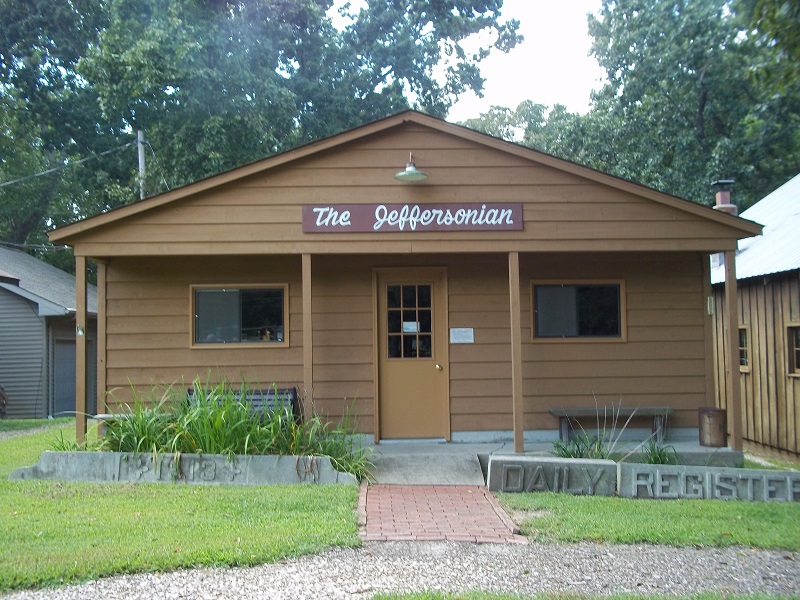 |
The Jeffersonian Print Shop | |
| This building is named for the first newspaper published in Jefferson County, houses a collection of turn-of-the-century letter presses. Every letter had to be placed in the right position to print the newspaper. Several early newspapers are also on display. | ||
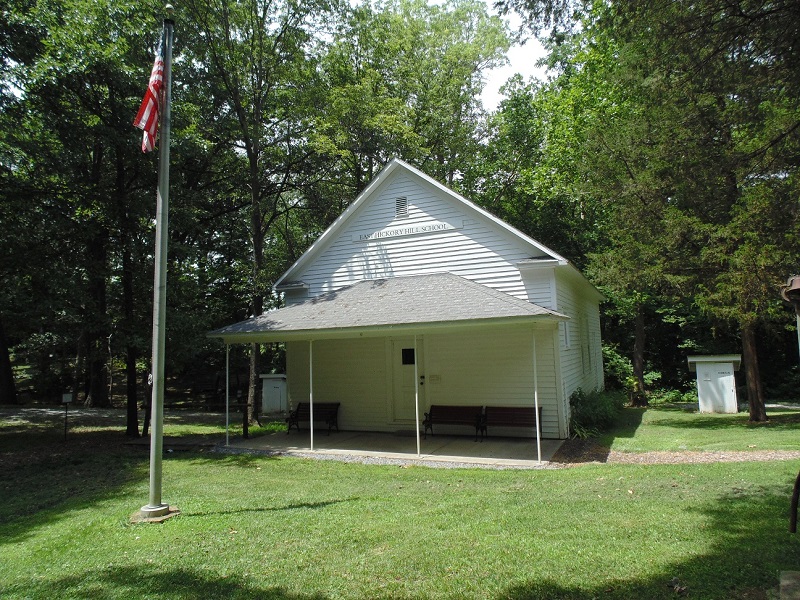 |
Hickory Hill School | |
| This 1919 school building was originally located west of Bluford, IL. In the late 1800s through the late 1950s, there were 144 of the one-room schools in the county. Volunteers hold classes here as part of the Day In The Life Of A Prairie Child program. | ||
 |
Clifton Cabin | |
| Built by Thomas Frank Clifton in 1865, the cabin was occupied until about 1920. It houses a replica fold-up rope bed of the type which led to the saying “Night, night, sleep tight” | ||
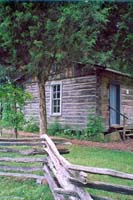 |
Koy Cabin | |
|
This two room log house was built in 1889 in Casner Township by August and Ann Koy. It was occupied for over a century by three generations of the Koy family.
|
||
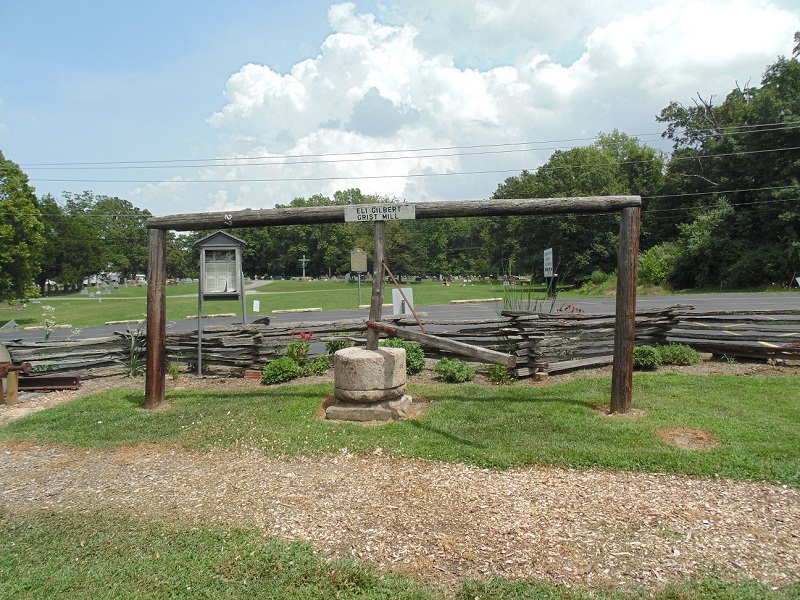 |
Eli Gilbert Grist Mill | |
|
This stone burr was moved from Ohio to Knob Prairie in southwest Jefferson County in 1839. It was first used in a watermill then later converted to a horse mill.
|
||
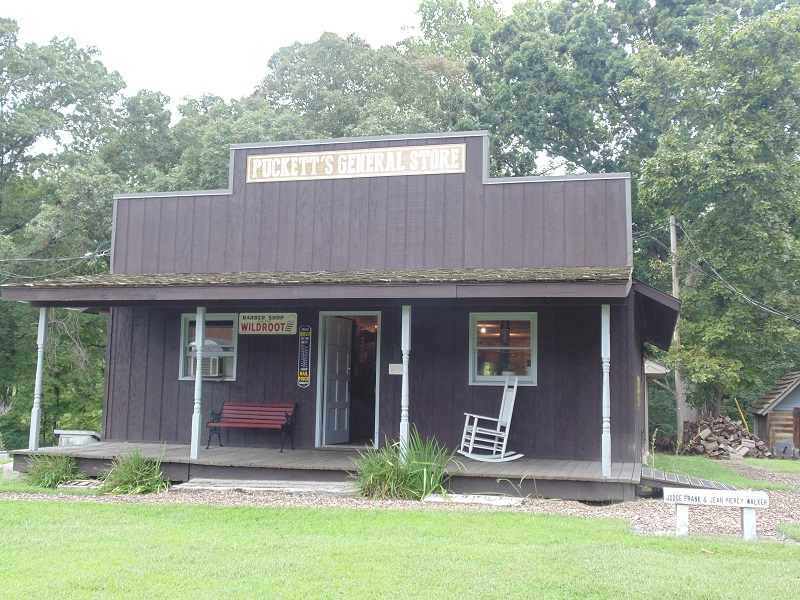 |
General Store | |
| A replica of James Thomas Johnson’s store. The store houses many interesting artifacts that would have been offered to patrons. Several changes were made to the store exhibits in the Spring of 2016. The Barber Shop inside the store is also of interest. | ||
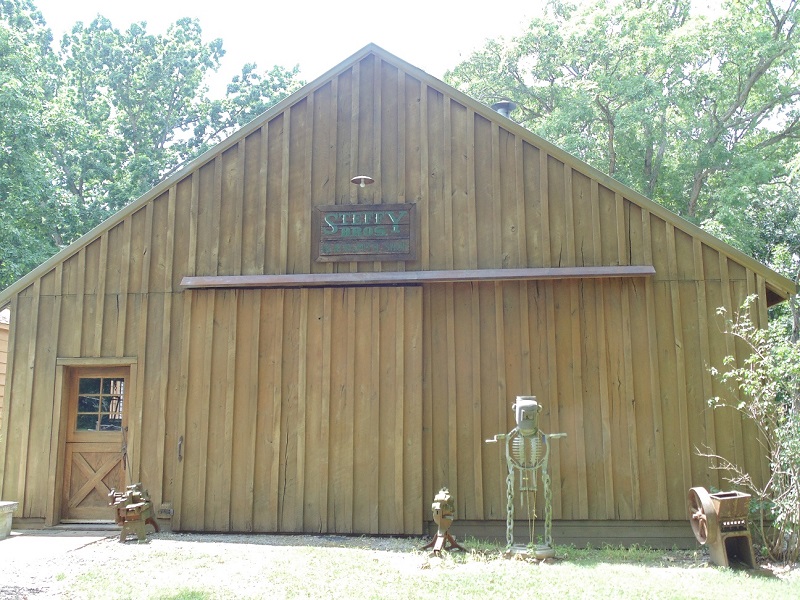 |
Blacksmith Shop | |
| This is a replica of the Thomas Atkins Blacksmith Shop that was operated at Waltonville, IL for many years. The four working forges and other items in the shop were moved from the Atkins shop. The Illinois Valley Blacksmith Association meets and works the forges on the 2nd Saturday of every month. All visitors are welcome to enjoy this event. | ||
| Time Line Trail | ||
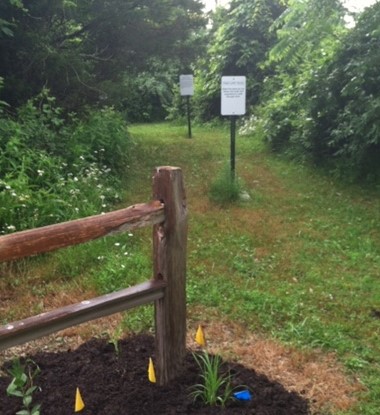 The trail begins near the North end of Heritage Acres (currently undeveloped acreage behind the main village) and winds it way toward the Southwest corner of the site. The trail, carved through a thick growth of Russian olive bushes, wild cherry trees, and blackberry patches, is marked by 24 signs depicting significant Jefferson County events, many corresponding to national and international events. The trail begins near the North end of Heritage Acres (currently undeveloped acreage behind the main village) and winds it way toward the Southwest corner of the site. The trail, carved through a thick growth of Russian olive bushes, wild cherry trees, and blackberry patches, is marked by 24 signs depicting significant Jefferson County events, many corresponding to national and international events.It is not uncommon to spook a white-tail deer, sometimes several, somewhere along the trail.
|
||
| Kitty Irvin Trail | ||
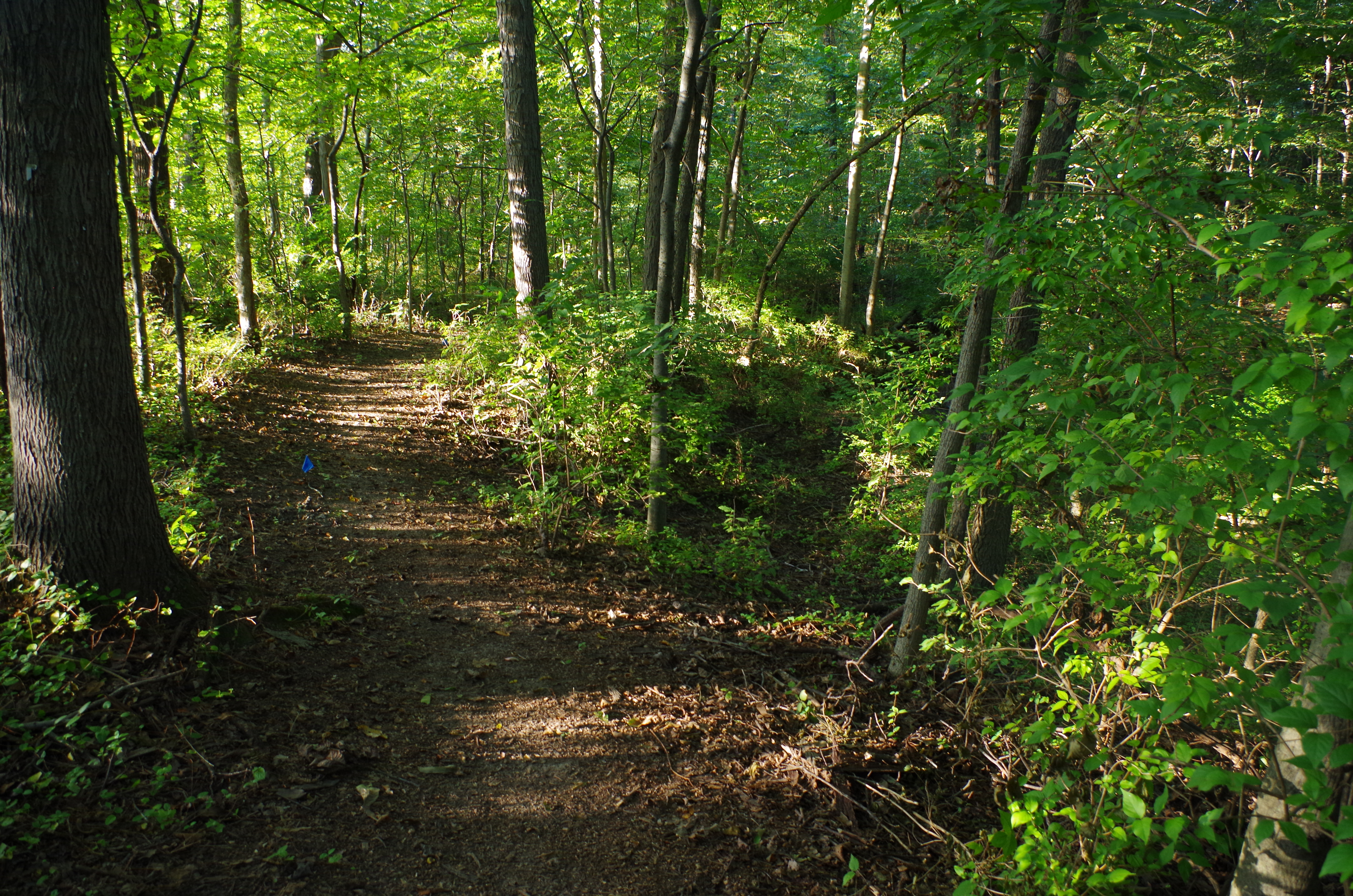 This trail begins near the Northeast corner of the village and exits the wooded area near the easily recognized (enclosed by wrought iron fence) grave sites of the Zadoc Casey family. The trail resumes through the trees, crosses a small stream and exits again behind the corn crib at the Northwest corner of the main village. This trail begins near the Northeast corner of the village and exits the wooded area near the easily recognized (enclosed by wrought iron fence) grave sites of the Zadoc Casey family. The trail resumes through the trees, crosses a small stream and exits again behind the corn crib at the Northwest corner of the main village.A marble bench near the stream is a great stop near dawn or dusk to watch nature come alive.
You may find a golf ball or two toward the end of the trail - the Indian Hills Golf Course borders the trail area to the West.
|
||
| Horace Mann School Sign | ||
|
The most recent addition to the village is the pathway constructed to allow visitors to view the remnants of the 1914 Horace Mann School building, #14 on the new village map.
Look for the new pathway branching off the path that starts between the Medical Building and the General Store. Just follow the signs.
The new pathway runs to near the Hickory Hill School and makes room for future school-related memorabilia.
|
||

